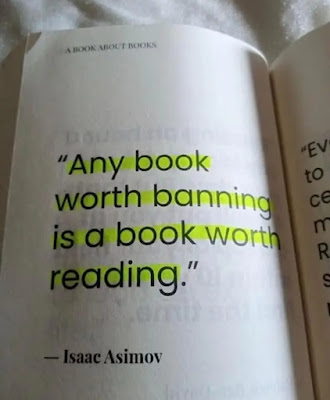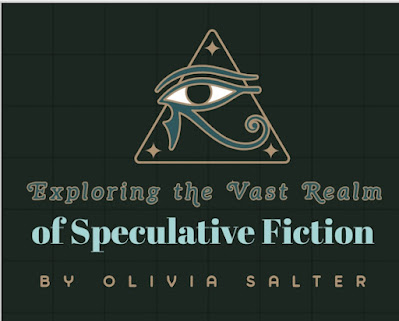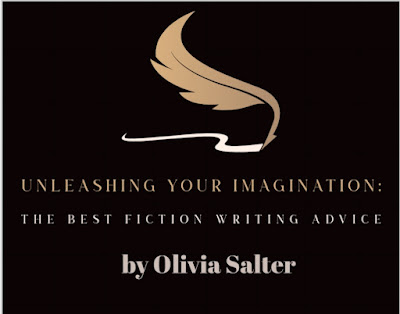Narrative
techniques are methods and literary devices a writer uses to craft the
elements of a story. They involve different narrative elements,
including plot, perspective, style, character, theme and genre. You can
apply different narrative techniques to most forms of writing, including
literature, poetry, film and theater.
Narrative techniques can help writers craft engaging stories by
determining effective strategies to communicate information to readers.
It's important to learn varied examples of techniques so you can decide
which option can aid your writing efforts. In this article, we define
what narrative techniques are and list 26 narrative techniques that you
can use in your writing.
26 narrative techniques for writers
Here's a list of 26 narrative techniques for writers to consider:
1. Use the setting
Many
writers create settings that reflect a character's mood or
circumstances. You can also use a setting to impact a character's
decision-making process, making it an active component of a story's
conflict. Consider novels in the gothic genre, which sometimes describe
gloomy castles and characters with a corresponding dour personality. By
defining certain traits of the castle setting, like a hallway that's
always cold, you can reveal many aspects of a character's defining
traits.
2. Create foreshadowing
Foreshadowing
is a way to provide hints about events in a story before they happen.
Writers often use foreshadowing to add an element of tension and emotion
to their stories, as readers may recognize the event and continue
reading to see if they're correct. You can also include foreshadowing to
give a story an ominous tone, depending on its genre.
3. Include sensory imagery
Writers
often use sensory imagery to create all the visuals of a scene using
only words. This technique can help a reader understand a scene's varied
elements, allowing them to understand a physical environment. For
instance, a scene that takes place in a grocery store might include
details about voices a character hears on the loudspeaker or the food
they smell, taste, see and touch while they shop.
4. Provide a "cliffhanger"
A
cliffhanger describes an ending of a story that withholds information
about how a narrative resolves. It often suggests multiple ways a story
could resolve, which allows readers to speculate about their preferred
ending. Writers sometimes include cliffhangers to generate excitement
about the next installment of a story. For instance, a television season
might end before a character decides who to marry.
5. Change the chronology
Some
writers use a flashback or flash-forward to include relevant
experiences from a character's past or future. Adding a scene about a
past event can reveal why a character takes certain actions in the
present timeline of a story. Incorporating a future event can provide
dramatic irony, which occurs when a reader learns how a story ends
before the characters do.
6. Choose a point of view
Point
of view typically describes who narrates a story's events. Writers
typically choose a perspective that best conveys the information they
prefer readers to know versus what they prefer to obscure. For example, a
first-person narrative only reveals the motivations of one character. A
third-person point of view uses she, he or they pronouns, revealing the
observations of many characters while the narrator exists outside of
the story entirely.
7. Incorporate character voice
Character
voice is the particular way a character expresses themselves in their
inner monologue or to others in a story. You can reveal a character's
voice through their personality traits,
dialogue and narration. Writers often develop a character's voice to
affect how a reader interprets their actions and to give the story a
tone. They may also include this technique to help readers distinguish
one character from another.
8. Use symbolism
Symbolism
is the use of objects or words to represent an abstract concept or
mood. Writers often incorporate symbols in a story to develop its core
themes and add another emotional element. For instance, a character
might see a certain type of weather pattern whenever they process their
relationship with another character. As a result, you could describe
that weather pattern as a symbol for the relationship overall.
9. Create an unreliable narrator
Unreliable
narrators are typically characters who deliberately omit information
from a reader. They may conceal information, unconsciously hide elements
because of circumstances in their character arc or lack knowledge of
certain details. Writers often use an unreliable narrator to create
tension and suspense in a story.
10. Involve readers in the story
Some
writers incorporate readers in the narrative of a text. For instance,
characters may know they're in a work of fiction or display an
understanding that readers are currently observing their actions. As a
result, they can address readers directly in narration or dialogue as an
invisible character in a text. Depending on your preferences, you can
have a reader's involvement affect the plot's overall arc.
11. Record a stream of consciousness
Stream
of consciousness is a method of conveying the immediate thoughts and
perceptions of a central character moving through a scene. It typically
involves long sentences and focuses more heavily on a character's
emotions than a sequence of plot points. Writers often use
stream-of-consciousness descriptions to explore how a character
processes sensory information. You can also use this method to write
nonlinear stories, as a person's immediate thoughts often involve memory
recall.
12. Personify an animal character
Personification
is a technique for applying the qualities of one entity to another.
Writers often personify animals by giving them the attributes of humans,
allowing them to have human motivations and language abilities. Many
fable and fairy tale writers personify animals to give the story a
fantastic style and tone. You can also personify animals to encourage
readers to connect with them emotionally.
13. Include big surprises in a plot
Often
referred to as a plot twist, some writers introduce an unforeseen event
in a story that dramatically alters the narrative. Writers often
include plot twists to add a dramatic element and adjust a reader's
expectations. For example, consider a character trying to find their
family. At a climactic moment, they learn that a supporting character
they've known since the beginning of the plot is secretly their
relative, which changes the focus of their narrative arc.
14. Make a satire or parody
Satire
uses humor to make social commentary. You can use literary devices such
as exaggeration and irony to make commentary about a person or a
situation. Parody is a similar technique that involves imitation of a
writer's style or a genre that exaggerates features for a comedic
effect. For instance, a parody of a popular celebrity may involve
exaggerating their mannerisms.
15. Compose a metaphor
Metaphors
are a type of figurative language that describes s omething by
referring to something else. When writing a metaphor, you typically
describe one emotion, object or concept as another to create a
connection between them and add imagery. For instance, consider the
phrase, "Love is an ocean." Equating these terms can allow readers to consider their similarities in new ways.
16. Include a simile
Similes
are another type of figurative language that makes direct comparisons
between objects or concepts. You can usually differentiate a similar
from a metaphor by observing whether it uses the words like or as to
describe a comparison. Using the elements from the metaphor above, an
example of a simile might be, "Love is like an ocean."
17. Resolve your plot neatly
Writers
sometimes resolve conflicts in a plot using an unanticipated event,
object or character technique. This technique helps you provide a
simple, clarified ending to a story. For instance, consider a play with a
conflict between two siblings about who should inherit land from a
relative. An ending using this technique might involve that relative
appearing in the last scene to decide for them.
18. Write a narrative-within-a-narrative
Some
writers have a character tell a story within a larger, encompassing
one. Writers often use this technique to comment on storytelling as a
practice. For instance, you might have characters introduce a
narrative-within-a-narrative at the beginning of a story, write this
full narrative in the middle, then bring the original characters back to
discuss it at the end.
19. Start in the middle of a story
Some
writers begin their story in the middle of the plot's events, meaning
the reader knows very little about the central conflict before it
starts. To reveal a backstory, they often include hints through dialogue
and narration. You can use this technique to add urgency to a story,
which may increase a reader's sense of suspense.
20. Use a hyperbole
Hyperbole
is a style technique involving an intense exaggeration to convey a
fact. Writers often include hyperbole to emphasize these statements to
readers, offering them more clarity about a situation or its emotional
relevance. Consider the hyperbole, "I
walked a thousand miles" spoken by a character who lacks this
capability. Including it may help readers comprehend how this character
reacted to this situation.
21. Design an author surrogate
Some
writers include a character to represent themselves. They're typically
the narrator, which allows a writer to comment on a story's events. You
can also use this technique to write a fictional character whose traits
and backstory directly parallel events from your life. Another option
involves giving yourself alternate traits to learn how you might behave
in certain situations, like a setting from science fiction.
22. Construct an allegory
An
allegory is a story that represents a larger idea or event from a
society that actually exists. Writers sometimes use an allegory to share
their perspective on that larger idea or event covertly instead of
directly stating their opinion. For example, consider a story about a
child looking for a lost item by talking to their neighbors. This might
be an allegory for humans who look for a purpose in life through other
people.
23. Use alliteration
Alliteration
is a technique for grouping similar letters or sounds in one sentence.
Writers use alliteration to emphasize a particular phrase or to create
memorable lines. An example of alliteration is "Damien dared Julia to
stand on the river dam." The words "Damien" and "dared "begin with the
same letter, while the words "stand" and "dam" have the same beginning
consonant sound.
24. Involve a "Red herring"
A
red herring is a technique for presenting misleading information that
directs a character away from an important concept or fact. Writers
often use red herrings in mystery novels to frame one character as a
likely suspect while another character is the actual culprit. You can
also use them to mislead readers about a certain aspect of a plot or
character to add an element of surprise to a story.
25. Try the cut-up method
The
cut-up method is a technique where you remove individual words or
sentences from a written text to create something new. You can use it to
comment on an original piece or alter its context. For instance, you
use scissors to separate words from a newspaper article and reuse them
in a poem about the content of that article.
26. Add defamiliarization
Defamiliarization
is a technique where a writer describes a common situation using
uncommon descriptions. You can use this technique to examine aspects of
daily life in a particular society to help readers develop a new
perspective. For example, you could describe a character who observes
pet one day and thinks about what it means to share a life with a
non-human creature who communicates in different ways.







.jpeg)
